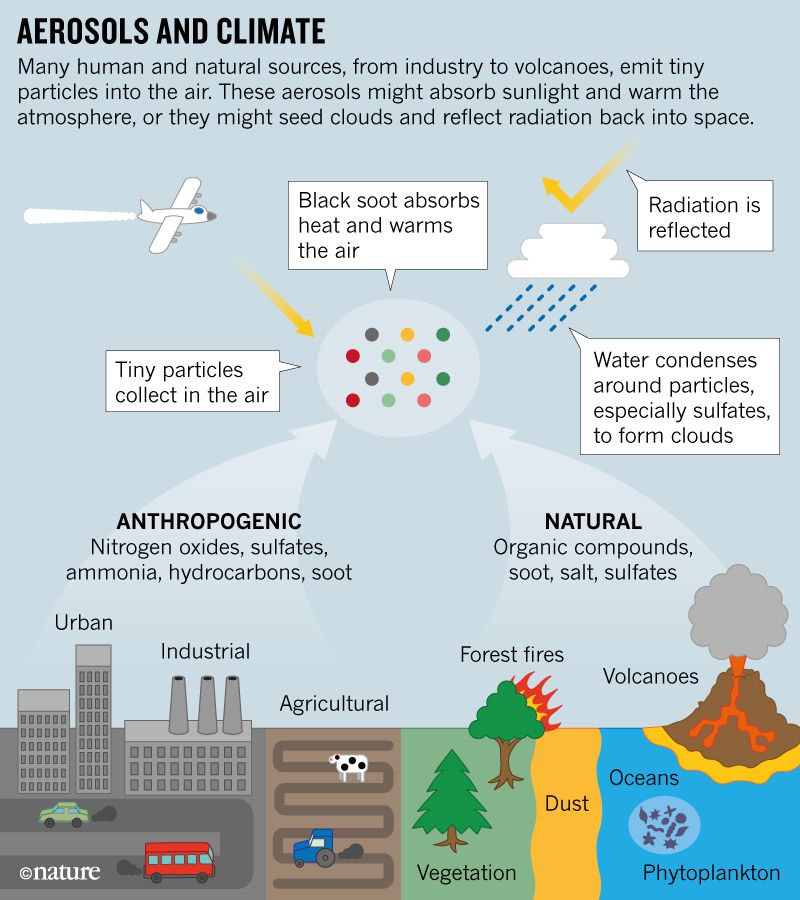Focus: GS-III Science and Technology, Prelims
Why in news?
Details
- The research paper found that monthly-mean atmospheric radiative forcing of aerosols leads to increasing heat rates and Temperature over the Ladakh region is increasing over the 3 decades 1990-2020.
- Impact of aerosls still remains one of the major uncertainties in the climate change assessment.
What is Aerosol?
- An aerosol is a colloid of fine solid particles or liquid droplets, in air or another gas.
- In simple terms, Aerosols are minute particles suspended in the atmosphere.
- Aerosols can be natural (fog, forest exudates and geyser steam) or artificial (haze, dust, particulate air pollutants and smoke). The bulk of aerosols—about 90% by mass—have natural origins.
- Aerosols also can act as sites for chemical reactions to take place (heterogeneous chemistry).
- Aerosols interact both directly and indirectly with the Earth’s radiation budget and climate.
Can we see Aerosols?
- When the suspended particles in aerosols are sufficiently large, we notice their presence as they scatter and absorb sunlight.
- Their scattering of sunlight can reduce visibility (haze) and redden sunrises and sunsets.

Direct effects of Aerosols
As a direct effect most aerosols reflect sunlight and some also absorb it. Aerosols can, hence, alter the reflectivity, or albedo, of the planet. They are also likely to hasten the melting of ice in the Arctic.
Different Aerosols and their effects:
- Pure sulfates and nitrates reflect nearly all radiation they encounter, cooling the atmosphere.
- Black carbon absorbs radiation readily, warming the atmosphere but also shading the surface.
- Brown carbon or organic matter has a warming influence on the atmosphere.
- Salt particles tend to reflect all the sunlight they encounter.
Indirect effects of Aerosols
- As an indirect effect, aerosols in the lower atmosphere can modify the size of cloud particles, changing how the clouds reflect and absorb sunlight.
- Aerosols also can act as sites for chemical reactions to take place: the most significant amongst them are the ones that lead to the destruction of stratospheric ozone.
- Indirectly aerosols typically work in opposition to greenhouse gases and cause cooling.





